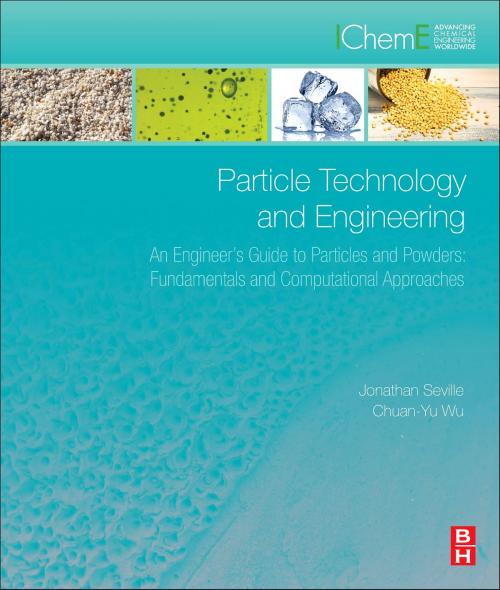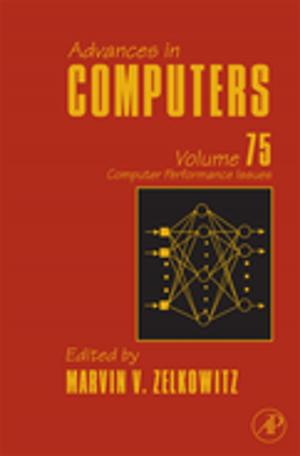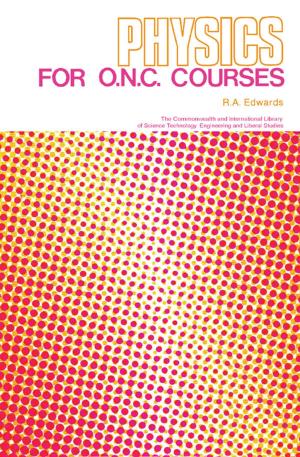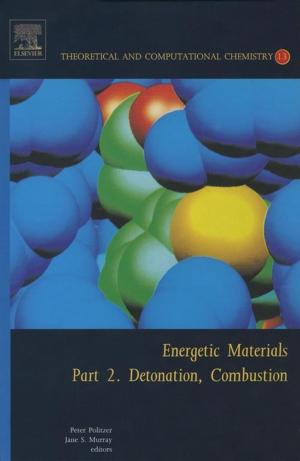Particle Technology and Engineering
An Engineer's Guide to Particles and Powders: Fundamentals and Computational Approaches
Nonfiction, Science & Nature, Science, Chemistry, Technical & Industrial, Technology, Engineering, Chemical & Biochemical| Author: | Jonathan P.K. Seville, Chuan-Yu Wu | ISBN: | 9780080983448 |
| Publisher: | Elsevier Science | Publication: | May 20, 2016 |
| Imprint: | Butterworth-Heinemann | Language: | English |
| Author: | Jonathan P.K. Seville, Chuan-Yu Wu |
| ISBN: | 9780080983448 |
| Publisher: | Elsevier Science |
| Publication: | May 20, 2016 |
| Imprint: | Butterworth-Heinemann |
| Language: | English |
Particle Technology and Engineering presents the basic knowledge and fundamental concepts that are needed by engineers dealing with particles and powders. The book provides a comprehensive reference and introduction to the topic, ranging from single particle characterization to bulk powder properties, from particle-particle interaction to particle-fluid interaction, from fundamental mechanics to advanced computational mechanics for particle and powder systems.
The content focuses on fundamental concepts, mechanistic analysis and computational approaches. The first six chapters present basic information on properties of single particles and powder systems and their characterisation (covering the fundamental characteristics of bulk solids (powders) and building an understanding of density, surface area, porosity, and flow), as well as particle-fluid interactions, gas-solid and liquid-solid systems, with applications in fluidization and pneumatic conveying. The last four chapters have an emphasis on the mechanics of particle and powder systems, including the mechanical behaviour of powder systems during storage and flow, contact mechanics of particles, discrete element methods for modelling particle systems, and finite element methods for analysing powder systems.
This thorough guide is beneficial to undergraduates in chemical and other types of engineering, to chemical and process engineers in industry, and early stage researchers. It also provides a reference to experienced researchers on mathematical and mechanistic analysis of particulate systems, and on advanced computational methods.
- Provides a simple introduction to core topics in particle technology: characterisation of particles and powders: interaction between particles, gases and liquids; and some useful examples of gas-solid and liquid-solid systems
- Introduces the principles and applications of two useful computational approaches: discrete element modelling and finite element modelling
- Enables engineers to build their knowledge and skills and to enhance their mechanistic understanding of particulate systems
Particle Technology and Engineering presents the basic knowledge and fundamental concepts that are needed by engineers dealing with particles and powders. The book provides a comprehensive reference and introduction to the topic, ranging from single particle characterization to bulk powder properties, from particle-particle interaction to particle-fluid interaction, from fundamental mechanics to advanced computational mechanics for particle and powder systems.
The content focuses on fundamental concepts, mechanistic analysis and computational approaches. The first six chapters present basic information on properties of single particles and powder systems and their characterisation (covering the fundamental characteristics of bulk solids (powders) and building an understanding of density, surface area, porosity, and flow), as well as particle-fluid interactions, gas-solid and liquid-solid systems, with applications in fluidization and pneumatic conveying. The last four chapters have an emphasis on the mechanics of particle and powder systems, including the mechanical behaviour of powder systems during storage and flow, contact mechanics of particles, discrete element methods for modelling particle systems, and finite element methods for analysing powder systems.
This thorough guide is beneficial to undergraduates in chemical and other types of engineering, to chemical and process engineers in industry, and early stage researchers. It also provides a reference to experienced researchers on mathematical and mechanistic analysis of particulate systems, and on advanced computational methods.
- Provides a simple introduction to core topics in particle technology: characterisation of particles and powders: interaction between particles, gases and liquids; and some useful examples of gas-solid and liquid-solid systems
- Introduces the principles and applications of two useful computational approaches: discrete element modelling and finite element modelling
- Enables engineers to build their knowledge and skills and to enhance their mechanistic understanding of particulate systems















